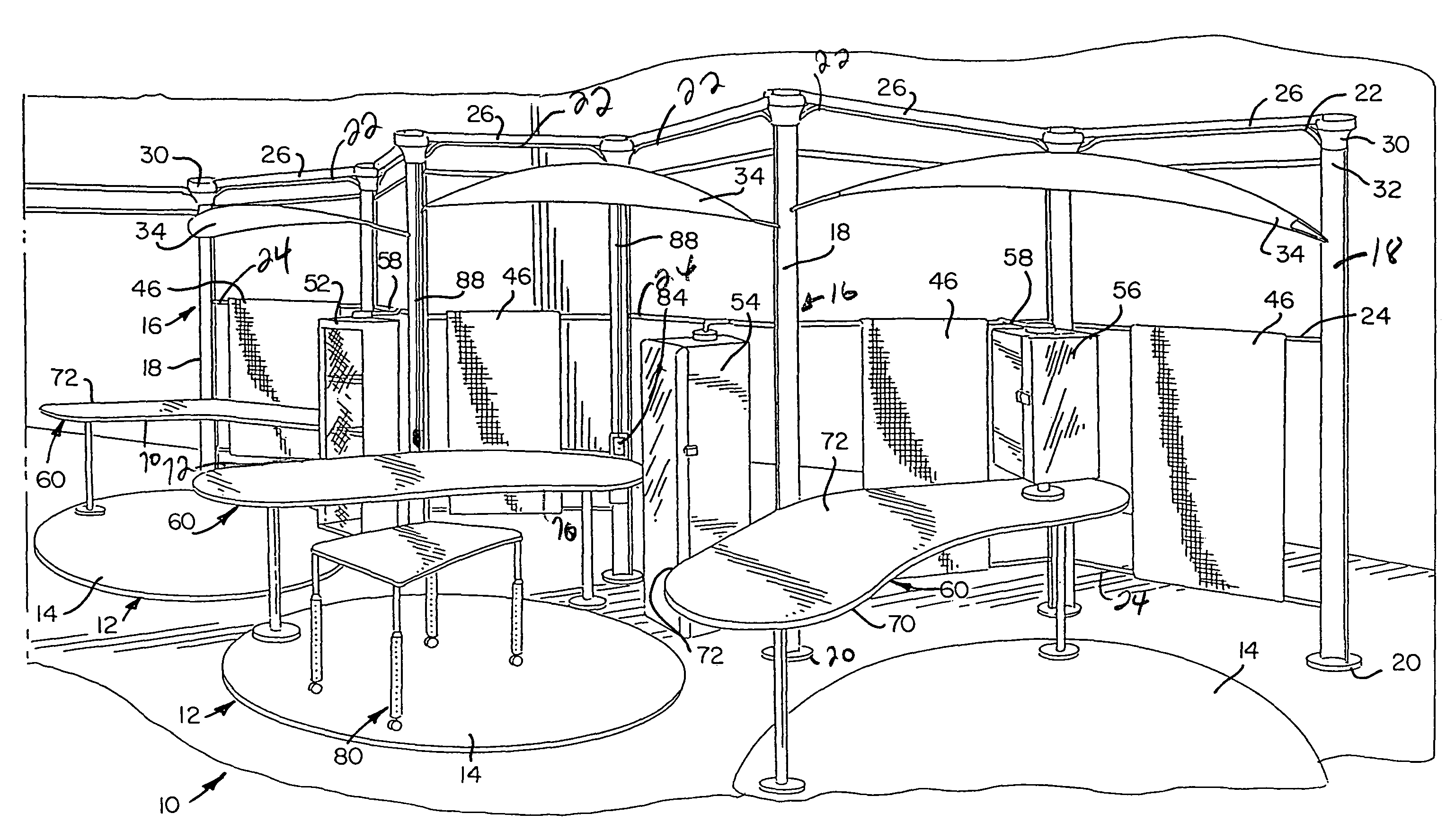Work space management and furniture system
a work space management and furniture technology, applied in the field of work space management and furniture systems, can solve the problems of inability to meet practical or commercial requirements, functional and aesthetic requirements which cannot be met in practice or commercially, and many current open plan systems do not meet these requirements. achieve the effect of increasing efficiency and flexibility
- Summary
- Abstract
- Description
- Claims
- Application Information
AI Technical Summary
Benefits of technology
Problems solved by technology
Method used
Image
Examples
Embodiment Construction
[0073]The invention is described with reference to the drawings in which like elements are referred to by like numerals. The relationship and functioning of the various elements of this invention are better understood by the following detailed description. However, the embodiments of this invention as described below are by way of example only, and the invention is not limited to the embodiments illustrated in the drawings. It should also be understood that the drawings are not to scale and in certain instances details have been omitted which are not necessary for an understanding of the present invention such as conventional details of fabrication and assembly.
[0074]The present invention is directed to a unique system 10 that divides up space into a plurality of work areas 12. Floor mats 14 are used to assist in the installation of the system 10 and to define personal space for each user. A three-dimensional framework 16 including poles 18 and crossbeams 22, 24 separates the space ...
PUM
 Login to View More
Login to View More Abstract
Description
Claims
Application Information
 Login to View More
Login to View More - R&D
- Intellectual Property
- Life Sciences
- Materials
- Tech Scout
- Unparalleled Data Quality
- Higher Quality Content
- 60% Fewer Hallucinations
Browse by: Latest US Patents, China's latest patents, Technical Efficacy Thesaurus, Application Domain, Technology Topic, Popular Technical Reports.
© 2025 PatSnap. All rights reserved.Legal|Privacy policy|Modern Slavery Act Transparency Statement|Sitemap|About US| Contact US: help@patsnap.com



